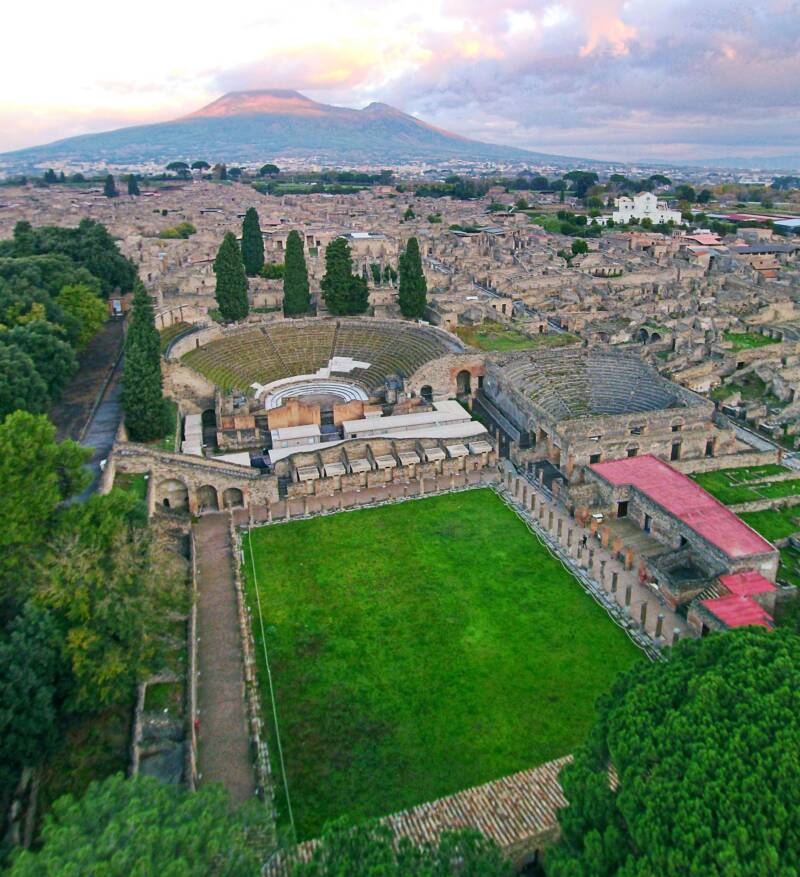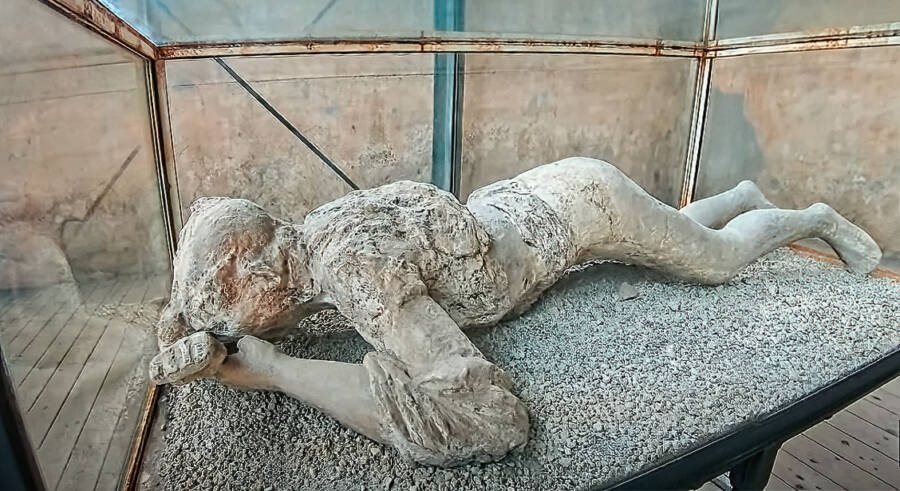Pompeii: The City Lost To A Volcanic Eruption

ElfQrin/Wikimedia CommonsThe ruins of Pompeii, with Mount Vesuvius in the distance.
Pompeii was once a prosperous Roman city near Naples with as many as 20,000 residents. It held opulent villas, bustling marketplaces, and a massive amphitheater. After Mount Vesuvius had been dormant for centuries, however, the volcano erupted in a cloud of smoke, ash, and toxic vapor in 79 C.E. The eruption killed at least 2,000 people in Pompeii alone, with an estimated 16,000 total victims in the surrounding region.
The blast spewed a cloud of debris more than nine miles into the atmosphere, blocking out the Sun and causing ash to fall at a rate of about six inches per hour. Then, a series of pyroclastic surges of rock and superheated gas barreled into Pompeii and Herculaneum, killing every living thing in their paths before layers of debris completely covered the cities.
Although the eruption destroyed Pompeii and Herculaneum, it also perfectly preserved them, freezing the cities and their citizens in time under layers of ash for over 1,000 years.

Mary Harrsch/Wikimedia CommonsA victim of the eruption of Mount Vesuvius who was found in the changing room of a Pompeii bathhouse.
Excavations of the lost cities began accidentally in the 18th century when builders constructing a palace for the King of Naples discovered ruins while digging. In the 1860s, archaeologist Giuseppe Fiorelli devised an ingenious technique of pouring plaster into voids left by decomposed bodies, creating haunting casts of victims frozen in their final moments.
The excavations have since yielded extraordinary insights into Roman life. Frescoes discovered throughout the city, particularly in wealthy homes like the House of the Vettii, depict mythological scenes, opulent banquets, and sometimes erotic imagery, revealing a society where wealth, pleasure, and religion were intertwined.





